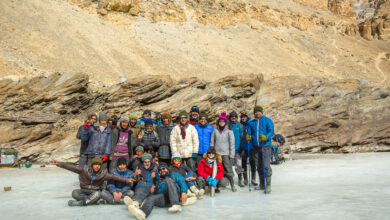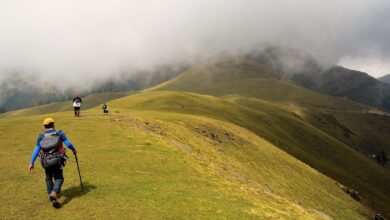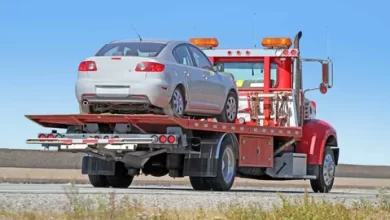Markha Valley Trek: A Comprehensive Guide
The Markha Valley trek in Ladakh is one of the most sought-after trekking routes in Ladakh, India. It offers an exquisite blend of high-altitude landscapes, traditional Ladakhi villages, ancient monasteries, and the chance to encounter diverse wildlife. This trek lies within the Hemis National Park, which adds to the allure with stunning views of the Stok Kangri and other Himalayan peaks.
Planning a Markha Valley trek involves preparing for physical challenges, understanding logistics, gathering the right equipment, and ensuring that all safety protocols are in place. This guide covers everything you need to know for a successful trek.
1. Best Time to Visit
The optimal time for the Markha Valley trek is from June to September, during the summer and monsoon months. During this period, the weather is generally pleasant, and the snow from winter has melted enough to allow for trekking. However, it’s still essential to be prepared for unpredictable weather, as conditions in the mountains can change rapidly.
- June to Mid-September: The summer season, where trails are open, snow has melted, and temperatures are moderate.
- October to May: These months are unsuitable for trekking as the trails are blocked with heavy snow, and the cold is intense.
2. Duration of the Trek
The Markha Valley trek usually takes between 6 to 9 days, depending on your starting point and the route you choose.
- Shortest Route: 6-7 days starting from Chilling and ending at Shang Sumdo.
- Standard Route: 8-9 days starting from Spituk and ending at Shang Sumdo or Hemis.
A basic itinerary is:
Day 1: Drive from Leh to Spituk (3,400 m), trek to Zingchen (3,400 m)
Day 2: Zingchen to Yurutse (4,150 m)
Day 3: Yurutse to Skiu via Ganda La (4,800 m)
Day 4: Skiu to Markha (3,700 m)
Day 5: Markha to Thachungtse (4,200 m)
Day 6: Thachungtse to Nimaling (4,700 m)
Day 7: Nimaling to Shang Sumdo via Kongmaru La (5,200 m), drive to Leh
3. Permit Requirements
To trek in the Hemis National Park, you will need an Inner Line Permit (ILP), which is required for foreign nationals. You can obtain this from the DC Office in Leh, usually within a day. It’s best to check the most updated regulations on permits, as they sometimes change.
Additionally, you need to pay a fee to enter Hemis National Park. This fee is minimal and can be paid either at the park entrance or through a trekking agency.
4. Physical Fitness and Acclimatization
Fitness Level
The Markha Valley trek is classified as moderate to difficult. While the trek doesn’t require technical climbing skills, the high altitude and long distances can be physically demanding. You need to be in good shape, with a focus on cardiovascular endurance, strength, and flexibility.
- Cardio: Activities like running, swimming, or cycling help improve stamina.
- Strength Training: Strengthen your legs, core, and back through squats, lunges, and weight lifting.
- Hiking Practice: If possible, try hiking at altitudes above 3,000 meters before the trek to get a feel for the challenges of high-altitude trekking.
Acclimatization
Since Leh is located at around 3,500 meters, spending 2-3 days acclimatizing is critical to avoid Acute Mountain Sickness (AMS). During this period, you can explore nearby monasteries such as Thiksey or Hemis.
Symptoms of AMS include headaches, nausea, dizziness, and shortness of breath. If you experience severe symptoms, you may need to descend to a lower altitude.
Tips for Acclimatization:
- Stay hydrated.
- Avoid alcohol and tobacco.
- Ascend gradually, following the principle of “climb high, sleep low.”
5. Essential Trekking Gear
Proper gear is essential for a safe and enjoyable trek. Here’s a list of recommended items:
Clothing
- Base Layers: Breathable moisture-wicking fabric.
- Mid Layers: Fleece or wool jackets for warmth.
- Outer Layer: A waterproof and windproof jacket.
- Trekking Pants: Comfortable and moisture-wicking.
- Trekking Boots: High-quality, waterproof boots with good ankle support.
- Gloves, Hats, and Buffs: For warmth and protection against the sun.
- Thermal Socks: To keep feet warm at night.
- Sunglasses: To protect from the intense mountain sun.
Camping and Sleeping Gear
- Tent: If trekking independently.
- Sleeping Bag: Rated for temperatures around -10°C to -15°C.
- Sleeping Mat: For insulation and comfort on rough terrain.
- Trekking Poles: Helpful for balance and reducing strain on your knees.
Other Essential Gear
- Backpack: 50-70 liters capacity for a multi-day trek.
- Daypack: For shorter excursions and essentials during the day.
- Water Purification: Tablets or filters to ensure safe drinking water.
- Personal First Aid Kit: Include altitude sickness medications, bandages, antiseptic creams, etc.
- Snacks: Energy bars, nuts, and dried fruits for the trek.
6. Trekking Options: Guided vs. Independent
There are two main ways to undertake the Markha Valley trek:
Guided Trek
- Pros: You have the support of a local guide, porters, and sometimes mules to carry your gear. You don’t need to worry about food, accommodation, or navigation.
- Cons: This can be more expensive, and some trekkers may prefer a more independent experience.
A guided trek will cost anywhere from INR 20,000 to INR 40,000 ($250 – $500), depending on the duration and inclusions.
Independent Trek
- Pros: You have complete control over your itinerary and can travel at your own pace. It is also cheaper.
- Cons: You need to arrange for permits, food, and camping gear. You must also be experienced in high-altitude trekking, as the terrain is challenging, and there are fewer facilities along the way.
7. Accommodation and Food
During the trek, accommodation options include homestays in villages and camping.
Homestays
In villages like Markha, Hankar, and Skiu, locals offer homestays. This is a great way to experience Ladakhi culture and enjoy traditional food like Thukpa and Tsampa. Homestays are generally comfortable but basic, offering a bed and sometimes a shared bathroom. The cost is reasonable, around INR 800-1000 per night, including meals.
Camping
If you choose to camp, there are multiple scenic campsites along the route, such as at Nimaling. Camping allows for flexibility and the chance to experience the raw beauty of Ladakh’s wilderness. However, you will need to carry your own camping gear and food if you’re not trekking with a guided group.
Food
If you’re staying in homestays, meals typically consist of rice, dal, bread, and traditional Ladakhi dishes. It’s wise to carry some high-energy snacks like chocolates, dry fruits, or protein bars for the trail.
If you’re camping, you will need to plan meals carefully. Instant noodles, oats, and dehydrated meals are lightweight options that you can prepare with boiling water.
8. Wildlife and Cultural Experiences
Markha Valley is part of the Hemis National Park, a haven for wildlife enthusiasts. You may spot blue sheep, marmots, snow leopards (though rare), and various bird species.
Culturally, the region is predominantly Buddhist, and you will encounter stupas, mani walls (prayer-inscribed stone walls), and prayer flags along the trail. A visit to the Hemis Monastery, the largest and wealthiest monastery in Ladakh, is a highlight of the trek.
9. Challenges and Safety Tips
The Markha Valley trek, while beautiful, comes with its set of challenges:
- Altitude Sickness: This is one of the primary concerns. Always acclimatize well in Leh before starting the trek.
- Unpredictable Weather: Be prepared for sudden changes, including rain, snow, or strong winds.
- River Crossings: The trek includes several river crossings, especially near Markha. Depending on the time of year, water levels can be high, making the crossings tricky. Trekking poles and waterproof shoes are a must.
- Navigation: The route is not always well-marked. If trekking independently, you need to have a reliable map or GPS.
Safety Tips:
- Always inform someone of your route and expected return time.
- Carry a small first-aid kit with altitude sickness medication.
- Respect the local customs and environment, leaving no trace behind.
10. Budgeting for the Trek
The overall cost of the trek will depend on whether you are trekking independently or with a guide, and if you are using homestays or camping. Here’s a breakdown of possible expenses:
- Trekking Permit: INR 500 for domestic tourists, INR 1000 for foreign tourists.
- Accommodation: Homestays cost INR 800-1000 per night. Camping is free if you have your own gear.
- Food: Homestay meals are included in the accommodation cost. If camping, you need to carry your food, which can range from INR 200-500 per day.
- Transportation: Shared taxis or private cabs from Leh to Spituk/Shang Sumdo will cost INR 2000-4000.
- Guide and Porter: A guide costs around INR 2000-3000 per day, and a porter costs INR 1000-1500 per day.
Conclusion
The Markha Valley trek is a journey into the heart of Ladakh’s wilderness, offering a balance of natural beauty and cultural immersion. With proper preparation, it can be a life-changing experience for any adventure enthusiast. Whether you choose to trek with a guide or independently, make sure to respect the environment and the local culture, as this will only enhance the richness of your experience.


